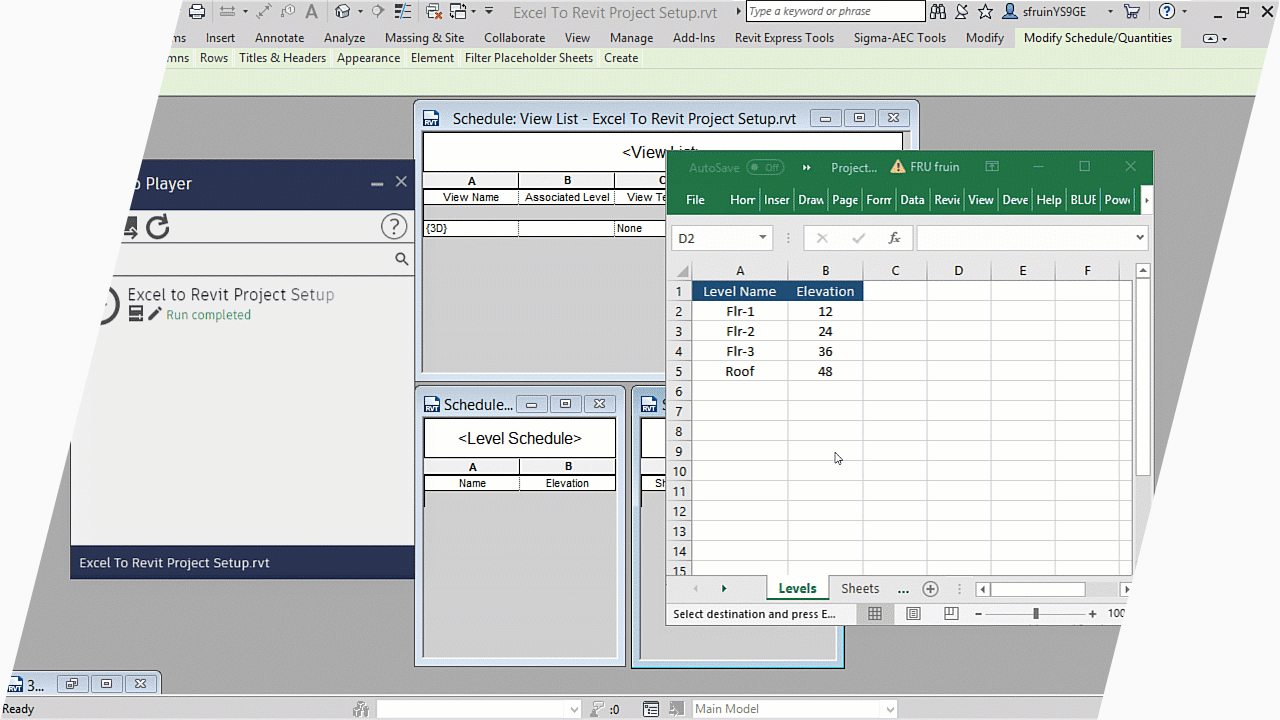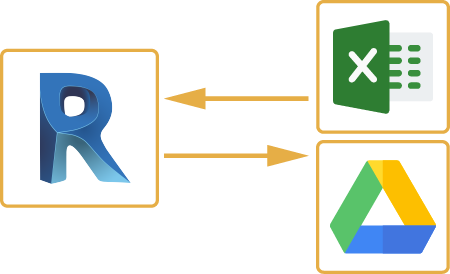Revit Tools for every single Job: Your Ultimate Design Buddy
Wiki Article
Excel-to-Revit: A Game-Changing Operations for Architectural Design - Introducing the Tricks
Presenting excel-to-revit, the game-changing workflow that will certainly revolutionize your design process. With excel-to-revit integration, you can improve your building design, unlock effectiveness, and make the most of cooperation within your group. Get ready to take your architectural design to the following level with excel-to-revit!The Power of Excel-to-Revit Assimilation

Picture the benefit of having the ability to upgrade and edit task data in Excel, and immediately see those modifications shown in your Revit model. No extra hand-operated data entrance or tedious updates. With Excel-to-Revit assimilation, you can save time and lower errors by leveraging the power of Excel's features and solutions to immediately generate accurate data in Revit.
Not only does this combination improve efficiency, yet it also enhances cooperation amongst staff member. You can quickly share Excel data with colleagues, that can then import the data into their Revit versions. This promotes a smooth exchange of information and makes certain that everyone is working with the most current data.

Streamlining Architectural Style With Excel-To-Revit
Simplifying architectural layout is simplified with making use of Excel-to-Revit (revit plugins). With this effective assimilation, you can maximize your workflow and save beneficial time throughout the style procedure. By leveraging the capacities of Excel and Revit, you can effortlessly transfer data in between both systems, removing the need for manual information entrance and decreasing the danger of mistakesExcel-to-Revit permits you to import and export information effortlessly, allowing you to easily upgrade and customize your building styles. You can develop routines, calculate quantities, and produce reports in Excel, and afterwards move that data directly into your Revit version. This integration guarantees that your design information is constantly updated and synchronized, eliminating the requirement for hand-operated updates and reducing the chances of variances.
By utilizing Excel-to-Revit, you can likewise take benefit of the powerful computational capacities of Excel. You can carry out complicated calculations, examine information, and automate repetitive jobs, all within Excel. After that, with simply a couple of clicks, you can import the results back right into Revit, permitting you to make educated layout choices and optimize your architectural designs.
Opening Effectiveness: Discovering the Excel-to-Revit Operations
Maximize your productivity by flawlessly integrating Excel and Revit for a much more efficient operations. With the Excel-to-Revit workflow, you can open an entire new level of performance in your building style procedure. By using the power of Excel's data monitoring capabilities and combining it with the adaptability and precision of Revit, you can simplify your style procedure and conserve valuable time.One of the vital advantages of this combination is the capability to import and export information in between Excel and Revit. This indicates that you can easily transfer job information, such as area routines or product quantities, from one software application to the various other, eliminating the requirement for hand-operated data access and reducing the possibilities of mistakes. You can likewise create customized solutions and computations in Excel to automate repeated tasks and do complex calculations, which can after that be effortlessly incorporated into your Revit designs.
Moreover, the Excel-to-Revit workflow permits for better sychronisation and partnership between employee. With Excel functioning as a central information center, multiple staff member can work with various facets of the task simultaneously, sharing and updating information in real-time. This not just boosts interaction yet additionally makes certain that everyone is functioning with the most up-to-date information, getting rid of the risk of inconsistencies.
Making Best Use Of Cooperation: Excel-to-Revit for Architectural Teams
By perfectly incorporating Excel and Revit, architectural groups can significantly enhance cooperation and attain a lot more reliable layout results. When using this powerful operations, you can easily transfer information between Excel spreadsheets and Revit versions, enhancing the layout process and enhancing communication among group members. With Excel-to-Revit assimilation, you can easily import project information, such as room routines, material amounts, and project specifications, straight right into Revit, removing the requirement for hands-on data entrance and lowering the possibilities of errors. This seamless link permits real-time updates, ensuring that everybody is dealing with the most up-to-date information and staying clear of inconsistencies between different files.Additionally, by leveraging Excel's powerful estimation abilities, you can perform complex calculations and evaluation on your style data, driving and providing useful insights notified decision-making. This assimilation also enables you to export information from Revit to Excel, allowing you to produce thorough records, charts, and graphs for discussions and evaluation. This collaborative operations promotes reliable communication and coordination amongst employee, as Excel works as a central center for information management and sharing.
Total, by welcoming the Excel-to-Revit workflow, building groups can accomplish greater levels of collaboration, efficiency, and accuracy in their layout process. revit plugins. This combination encourages groups to work with each other effortlessly, making certain that everybody gets on the exact same web page and adding to the success of the task
Revealing the Secrets of Excel-to-Revit Integration

One of the keys of Excel-to-Revit combination is the capability to take advantage of the power of solutions and estimations in Excel to drive specifications and create complex geometries in Revit. You can link Excel spreadsheets to Revit family members, allowing you to input information straight into the spread sheet and have it immediately update in the Revit version. This enhances the style process and ensures accuracy and consistency across the project.
Another secret is the ability to create personalized routines and records in Excel, utilizing information drawn out from Revit. This permits you to assess and envision job info in such a way that is not possible within Revit alone. You can conveniently create quantity take-offs, price estimates, and project timelines, giving useful understandings for decision-making and task administration.
Additionally, Excel-to-Revit assimilation allows reliable collaboration among staff member. Numerous individuals can service the same Excel spread sheet at the same time, making it easier to work with and track modifications. You can additionally utilize Excel's commenting function to give responses or communicate style modifications.
Verdict
By integrating the power of Excel and Revit, architects can now work more successfully, conserve time, and produce far better layouts. Begin incorporating excel-to-revit integration into your architectural design procedure today and reinvent the means you work.With simply a couple of clicks, you can import the outcomes back into Revit, allowing you to make enlightened layout choices and enhance your building designs.
By making use of the power of Excel's data monitoring capabilities and combining it with the versatility and accuracy of Revit, you can streamline your style process and conserve valuable time.
By seamlessly incorporating Excel and Revit, architectural groups can significantly enhance cooperation and accomplish much more reliable layout results. When utilizing this effective operations, you can quickly move information in between Excel spread sheets and Revit versions, enhancing the style procedure and improving communication amongst team participants.Additionally, by leveraging Excel's powerful estimation capacities, you can do complex computations and analysis on your layout information, driving and offering important insights notified decision-making.
Report this wiki page